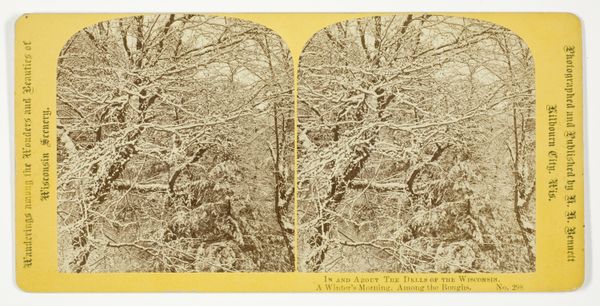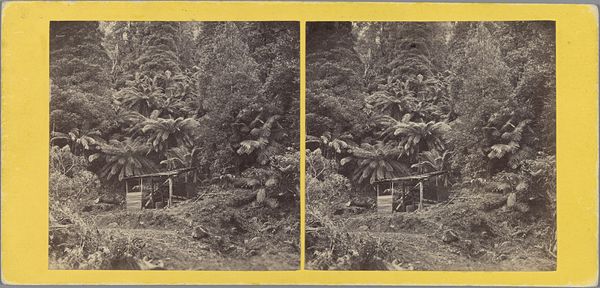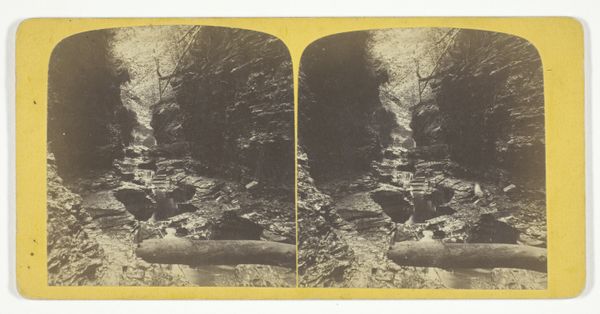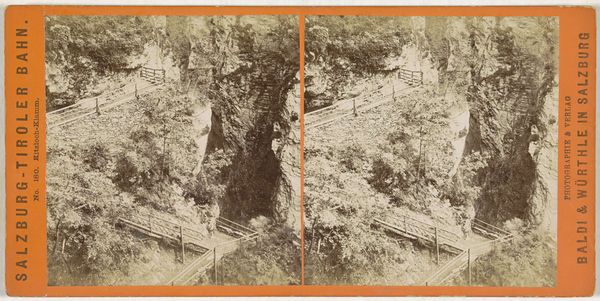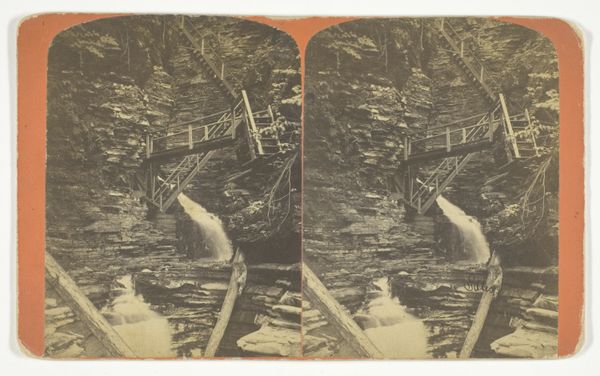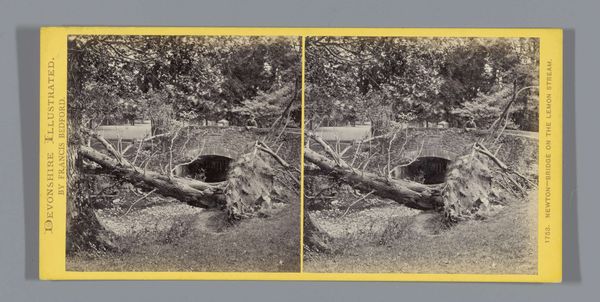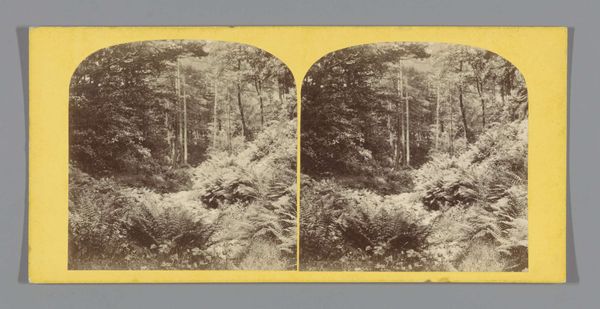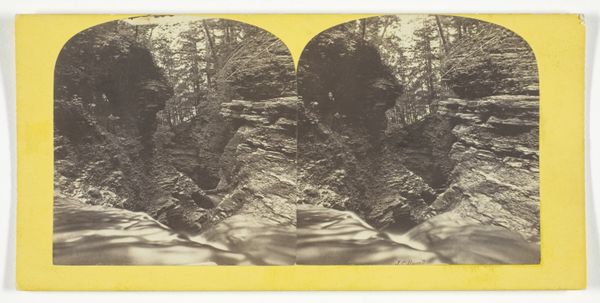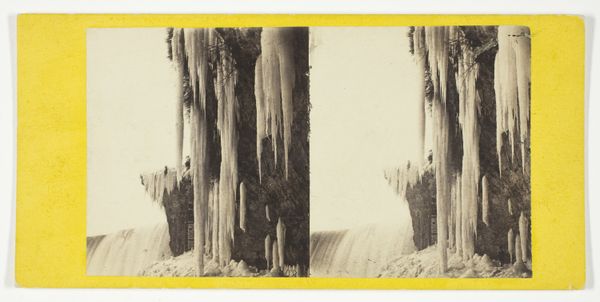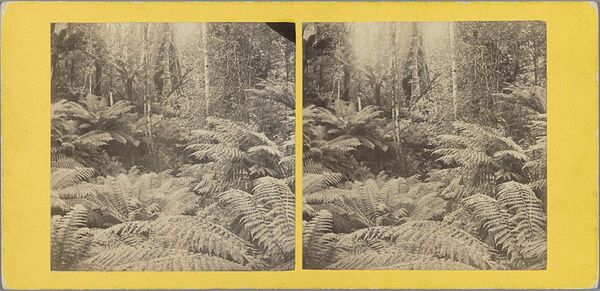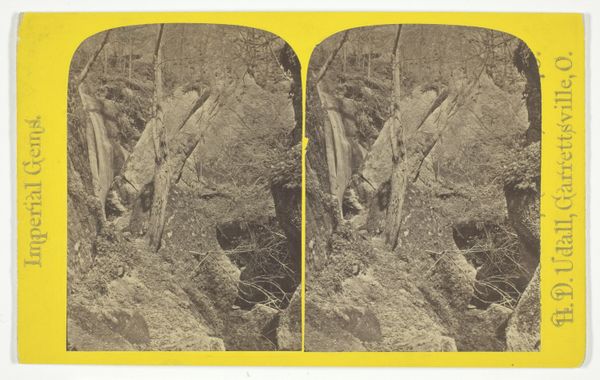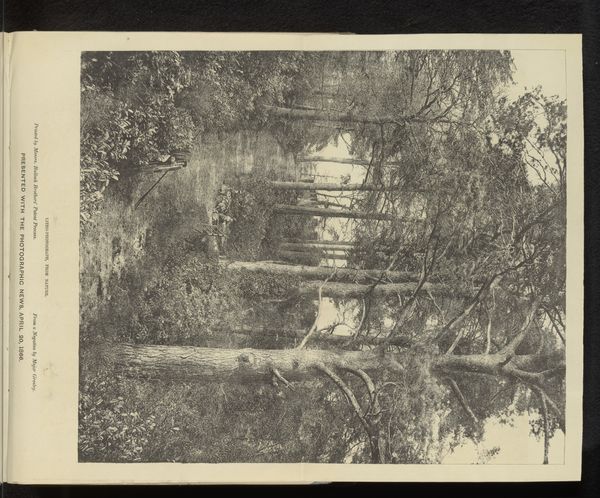
Dimensions: height 85 mm, width 170 mm
Copyright: Rijks Museum: Open Domain
Curator: This stereoscopic print is entitled "Bridge and a staircase in the park of the Monasterio de Piedra," dating from the latter half of the 19th century. The photographer is listed as M. Judez. What do you make of it? Editor: It strikes me as an incredibly mediated vision of nature. All those constructed pathways through what is ostensibly supposed to be the wilderness. The sepia tones give it this very strange, melancholic quality. It almost feels artificial. Curator: Ah, yes, the artifice. I think that’s a keen observation. Remember that 19th-century landscapes were so often designed to evoke specific emotional states. Consider how these architectural elements mimic natural forms. The bridge arch echoes that of the cave openings. Editor: Precisely. It is that push-and-pull, isn't it? The interplay between what’s presented as organic and what's visibly structured by human intent. Are we invited to reflect on our interventions in the natural world or celebrate them? This tension between the sublime and the controlled is potent. Curator: Indeed. The staircase and bridge suggest a constructed path toward enlightenment, a spiritual ascent facilitated by human intervention. The photograph itself functions like a secular icon. Note the way it leads your eye through the landscape using symbols of control and manipulation. Editor: So it is like a symbolic language of control and power played out on the land, reinforcing a social order… And whose access was it really facilitating? Because nature in the romantic imagination always plays this complex role as this wild untamed place, only for those with privilege. Curator: Good question. Remember how this photograph would have been circulated, too, through different networks of social power, almost like an early form of virtual tourism available to a select few. The Monastery’s Park, a landscape available only to those with the resources to visit or view it. Editor: Exactly! Even viewing becomes a site of control. Well, that has given me plenty to think about…I'm left to consider the role photography itself plays in shaping perceptions of space and privilege in the 19th century. Curator: And I will walk away reflecting on the power of symbology to offer and, more interestingly, complicate a spiritual journey.
Comments
No comments
Be the first to comment and join the conversation on the ultimate creative platform.
